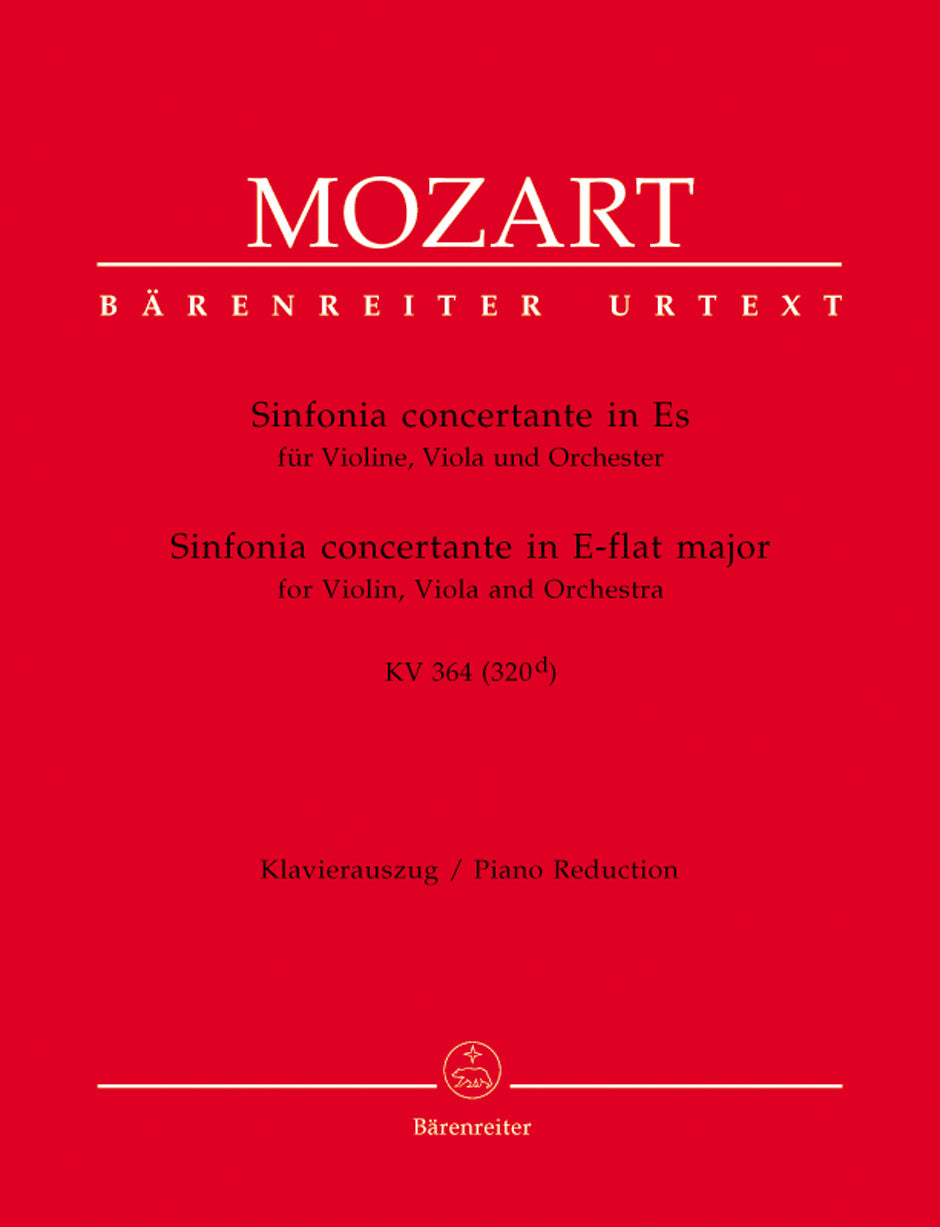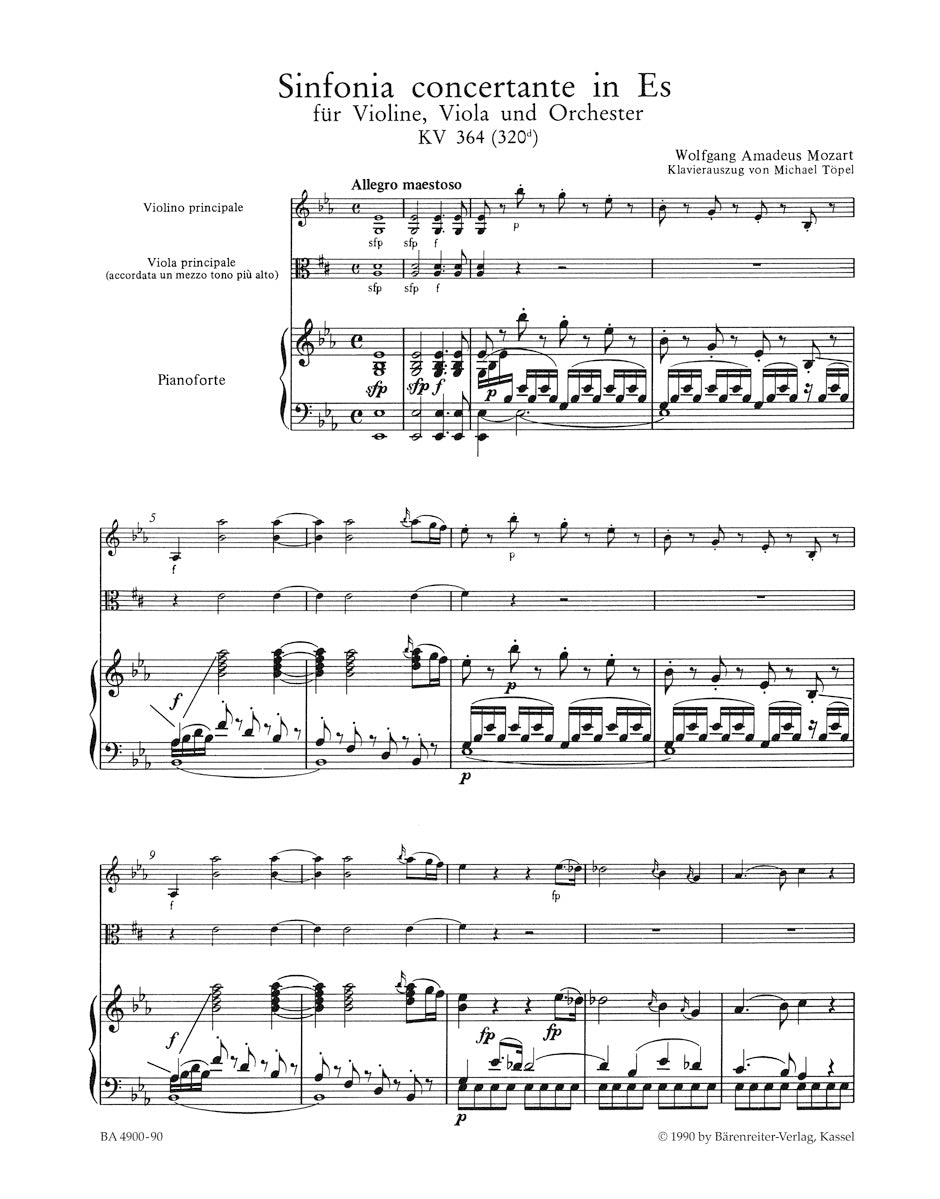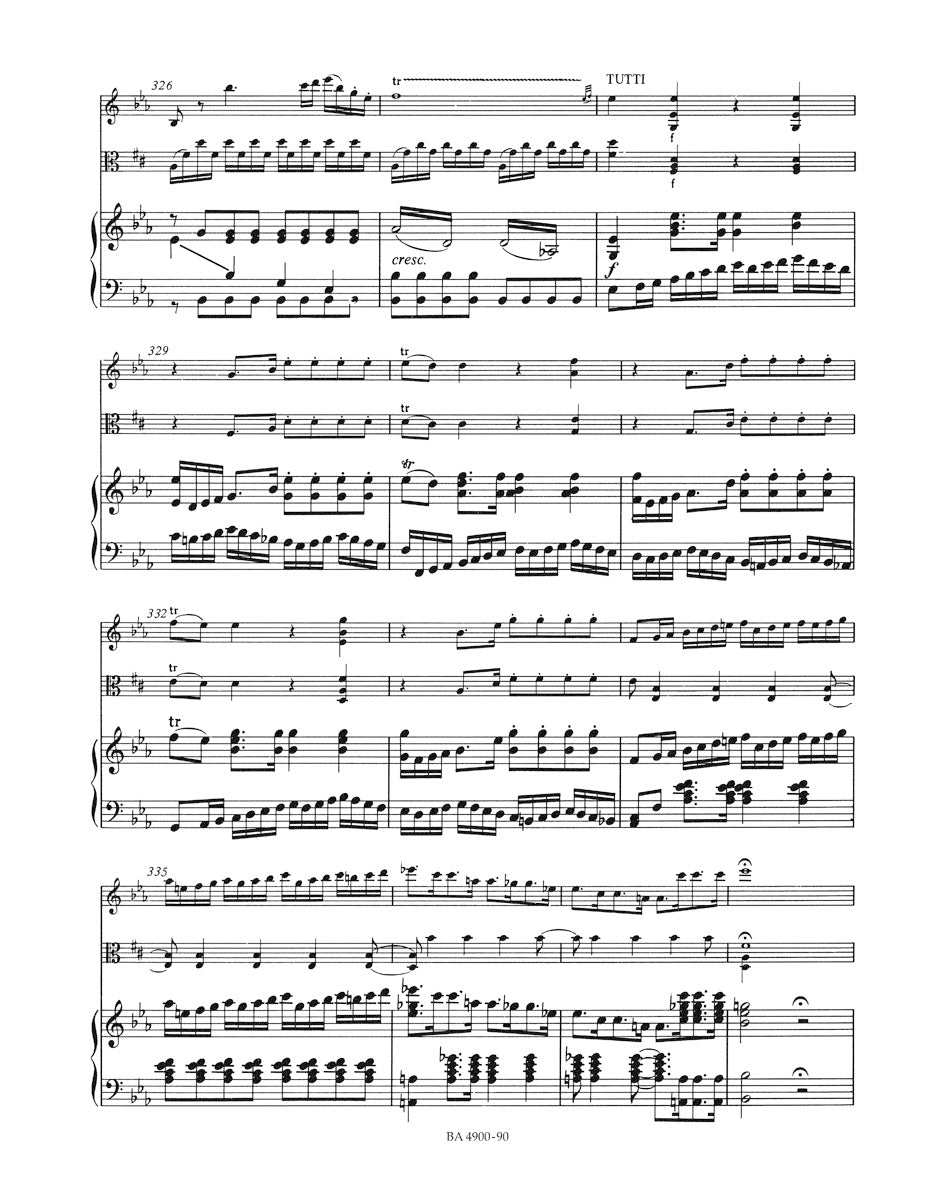


BARENREITER - 345062
Mozart Sinfonia concertante in E flat major K 364
Composer: Wolfgang Amadeus Mozart
Publisher: Bärenreiter
Instrumentation: Mixed
Format: Chamber Parts
Binding: Stapled
Dimensions: 12.2 in x 9.6 in
Pages: 95
Mozart Sinfonia concertante in E flat major K 364
Juilliard Store
144 West 66th Street
New York NY 10023
United States
Choose options
Mozart Sinfonia concertante in E flat major K 364
Juilliard Store
144 West 66th Street
New York NY 10023
United States
Mozart Sinfonia concertante in E flat major K 364
Juilliard Store
144 West 66th Street
New York NY 10023
United States
Editor: Mahling, Christoph-Hellmut
Arranger: Töpel, Michael
Orchestral scoring : V-solo/Va-solo/2Ob/2Hn/2V/2Va/Vc/double bass
Product format: piano reduction, part(s), Urtext edition
Binding: Stapled
Pages / Format: 47/16/16/16 - 31,0 x 24,3 cm
Mozart had no reason to compose any more for this genre in Paris. After Mozart’s return to Salzburg, he might have been eager to introduce the new genre there, especially since adequate instrumentalists were available. Also the choice of the solo instruments (violin and viola) in the work presented here was probably influenced by the popularity of this instrumental combination in Salzburg at that time.
